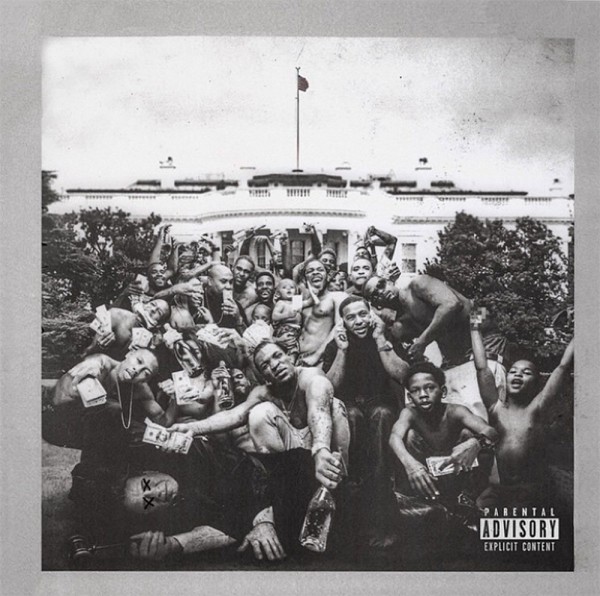Kendrick Lamar “To Pimp A Butterfly”
Kendrick Lamar
“To Pimp A Butterfly”
(Universal)
When playing last year’s Primavera Sound festivals in Barcelona and Porto, Kendrick Lamar and his entourage had a full week to kill in between. Western Portugal isn’t the most obvious travel stop for a hiphop hustler used to the speeds of the world’s more cosmopolitan cities. The local promoter wasn’t really up for his more extravagant ideas, but even then they couldn’t stop him from racing rented sports cars through the narrow streets of Porto.
Hearing stories like that, your likely to think, uh-oh – more rap and bling clichés. However, we squares were way off-base with this guy.
Lamar turned around those fears with two unstoppably brilliant shows. Who knew a hiphop concert could actually be so fantastic? The noughties and oughts have kind of left most of us believing hiphop is dull unless it’s a hood party or being played on a kick-ass home stereo. But no, with Lamar the shows lived up to the best expectations of concert halls (or a field in front of the Atlantic as it was there in Porto).
And so to “To Pimp A Butterfly”, Kendrick Lamar’s third album which turns out to be a massive step forward from “good kid, m.A.A.d city”, which was still pretty much classic hiphop. Right from the get-go Lamar shouts out that “Every Nigger is a Star” – striking a note of unity for the brothers, pushing back against hiphop’s tendency to descend into dissing.
More admonishing words come from Dr. Dre: “Anybody can get it, the hard thing is keeping it, motherfucker.” Of course he’s right. Many arise from the ghetto through hiphop – but so many fall right back down into the abyss (just take a look into the custody cell of Suge Knight). Or step to the gravestone of Tupac Shakur, who plays an important guest role on “To Pimp a Butterfly”. In the last song of the album, “Mortal Man”, Lamar talks to the fallen angel of Los Angeles, confessing his own egomania and substance addiction (as he does a lot during the album), issues the two rappers share.
Lamar consults Shakur. By doing so, he kind of shows that all the self-assurance on the album is built on unstable foundations – it’s a vulnerability he’s prepared to share.
But despite his scepticism the 27-year old Lamar is still a believer in the healing impact of music, in the hope of positive change. And who are we to not jump on this board after hearing the 15 songs before, a true manifesto for freedom and optimisim
I guess it is time to talk deeper about those 15 plus 1 songs. When attending the D’Angelo concert in Cologne two weeks ago, I was taken aback in the same way as now by hearing “To Pimp A Butterfly”. It was breathtaking how the two musical acts cohere and collide. As if two bands played at the same time and became one. So many ideas – and yet still everything was perfectly in place.
Lamar’s album is somehow the battle-rap-answer to D’Angelo’s album and shows. He shouts out a huge yeah to his collegue and goes even further. It comes with great pleasure to admit, that I am not nearly in charge to understand how this album is mixed. I mean, honestly, what the fuck is happening on “To Pimp A Butterfly”? How are those keyboard soundscapes, beats, saxaphone melodies and vocal harmonies and the drumming put together in this endless stream of sound? (Here a little footnote is necessary: seeing D’Angelo live I understood for the first time the importance of this unpredictable drumming style for the new era of hiphop, if you still wanna label it like that: the drumming opened so many new doors in the songs)
If “Black Messiah” blew away a lot of dust and pointed out a new road, “To Pimp A Butterfly” is the one teaching us how to walk in a new way to the Holy Land. How amazing it is then that Kendrick Lamar turns out to be an even greater seducer than D’Angelo? Possibly it’s the album’s special G-Funk approach, the influence of all those west coast pop songs young Lamar must have heard in his home hood of Compton. Now the G-Funk is sitting on top of all the other sound influences, just like a good dad watching his children. And it’s not just childeren, look there’s George Clinton in the backyard, and Snoop Doog, and Bilal – the most important around is Thundercat, the homie of Flying Lotus and a true mentor of the New School of Hip-Jazz.
Kendrick Lamar started working on this album not intending to deliver more hits in the style of “good kid, m.A.A.d city” – a brave decision, especially as he must have seen so many happy singing people in his audience during last year’s world tour. Instead he’s zeroed in on a bigger storyline, soundtracking a new take on identity politics and class struggle. Where Sun Ra was hoping to use jazz to escape to Saturn as he couldn’t see any potential for change down here on Earth, Kendrick Lamar sticks to our old blue planet. His jazz-rap is made to stay. He brings together the school of jazz-influenced hiphop folks from the 90s (that said, he is obviously, and through Thundercat, a listener to the achievements of Stone Throw and Brainfeeder and goes much further as back then Gang Starr and their gang) and the school of agigation and riot (from Public Enemy till Dead Prez). It’s all about melting down the paradigms in order to create a very special new sound. One of freedom. I can’t remember hearing a more open mix as on “To Pimp A Butterfly” – right now I’m lying down on my floor in front of the soundsystem and trying to figure out where it all comes from. How on Earth could one person have produced that?
To close, I have to admit that I never understood why people love Kendrick Lamar’s voice so much. I don’t, particularly. But each time I think about this while listening to the album, he comes up with one of those changes of articulation and I stand there with open mouth and have forgotten what I was complaining about. What a daredevil! In those moments I even forget all the other hugely talented people taking part on this record, who helped him to create the milestone that “To Pimp A Butterfly” most certainly is. Well, huge respect to Mr. Lamar.
Thomas Venker
“Okay, I throw away all my weapons. This album makes me nuts.” (Martin Riemann)
„To Pimp a Butterfly“ stands up in its greatness to the dimensions of problems and wishes Kendrick Lamar raps about.” (Jens Friebe)















